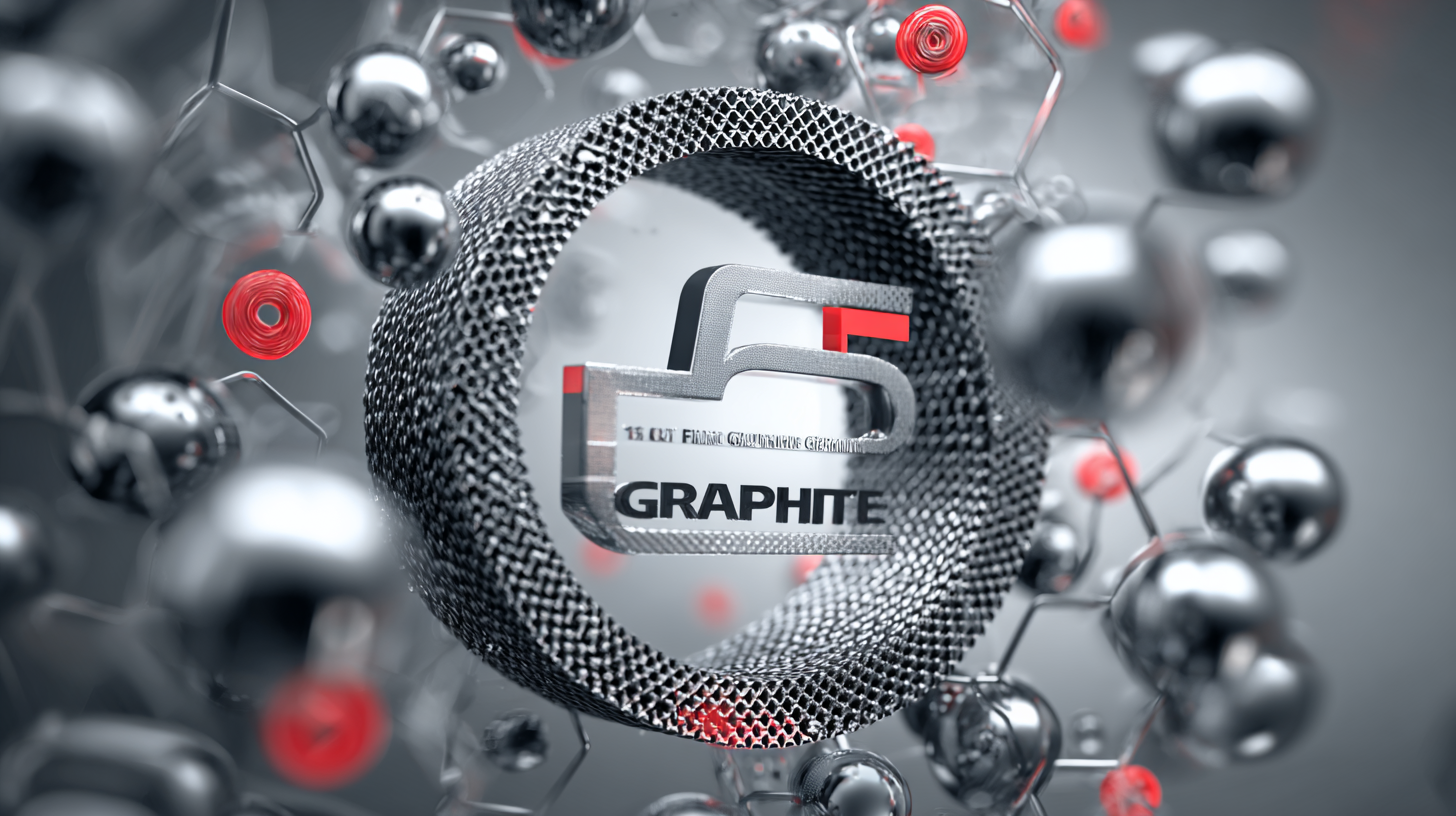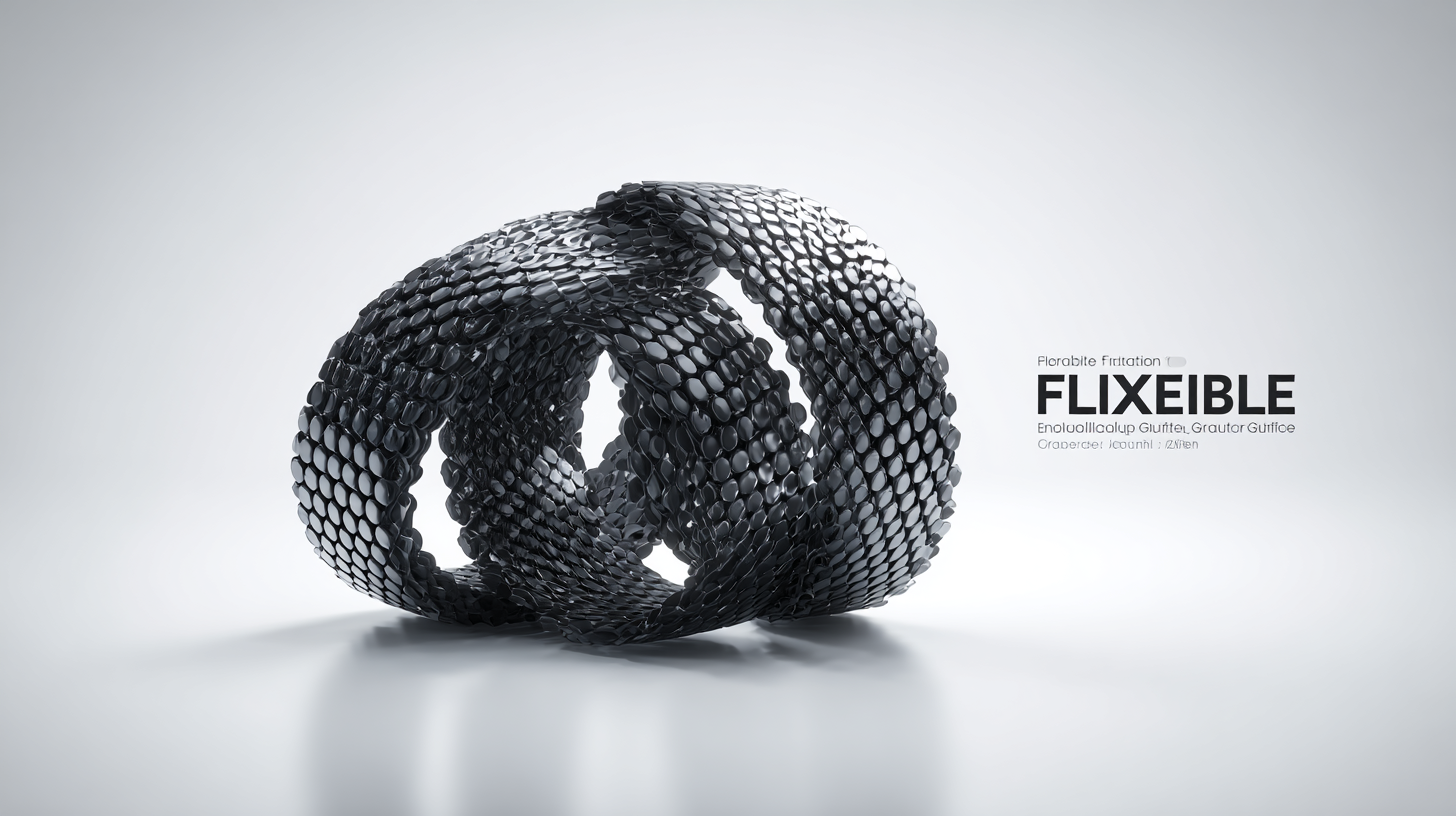Exploring Future Innovations in Best Flexible Graphite Gasket Technology for 2025
As we look toward the innovations shaping the future of industrial sealing solutions, the Flexible Graphite Gasket stands out as a critical component. According to a recent report by Market Research Future, the global gaskets market is projected to reach $10 billion by 2025, with the demand for flexible graphite gaskets specifically expected to grow significantly due to their superior sealing capabilities and temperature resistance. This evolution is primarily driven by industries such as oil and gas, automotive, and power generation, which are increasingly adopting advanced materials to enhance operational efficiency. In 2025, we anticipate witnessing transformative breakthroughs in flexible graphite gasket technology, including improved manufacturing techniques and enhanced performance characteristics, positioning them at the forefront of industrial applications. This blog will explore the current trends, challenges, and future innovations that will define the landscape of flexible graphite gaskets in the coming years.

Key Trends Shaping Flexible Graphite Gasket Technology in 2025
The flexible graphite gasket technology is on an upward trajectory as we move towards 2025, with key trends emerging that are poised to shape the industry. The flexible graphite market is projected to grow from USD 0.35 billion in 2025 to USD 0.45 billion by 2030, reflecting a compound annual growth rate (CAGR) of 5.5%. This growth is primarily driven by the increasing demand for flexible graphite in industrial sealing applications, as well as in the automation and electronics sectors. Such advancements in gasket technology are expected to significantly enhance performance in high-temperature and critical sealing environments.
In parallel, the industrial gaskets market is also experiencing robust growth, with forecasts indicating a rise from USD 12.76 billion in 2025 to USD 16.84 billion by 2030, witnessing a CAGR of 5.7%. These figures indicate not only a strengthening demand for flexible graphite gaskets but also highlight the increased integration of innovative materials in industrial applications. As manufacturers continue to explore the potential of flexible graphite in various sectors, including automotive and energy, the landscape of gasket technology is set to evolve, leading to enhanced operational efficiencies and sustainability in industrial processes.
Comparative Analysis: Traditional vs. Advanced Graphite Gasket Solutions
The advancement of graphite gasket technology is witnessing a significant shift as we move towards 2025, particularly in the realm of thermal conductivity and performance. Traditional graphite gaskets have long been utilized for their durability and cost-effectiveness; however, emerging innovations are setting new standards. For instance, recent introductions of graphene-based thermal pads have demonstrated impressive thermal conductivity ratings, reaching values such as 130W/m·K, making them essential choices for high-performance applications.
When comparing traditional graphite solutions to these advanced alternatives, it becomes clear that the latter offers superior heat dissipation capabilities, crucial for modern computing and industrial applications. The integration of advanced materials not only enhances performance but also improves the longevity and reliability of gasket solutions.
**Tips:** Investing in cutting-edge materials can significantly impact the performance of your machinery, so be sure to assess the specific thermal requirements of your projects. Additionally, consider compatibility with existing systems when choosing between traditional and advanced graphite solutions; the right choice can lead to considerable efficiency gains. Evaluating the long-term benefits of these innovations will help businesses stay competitive in a rapidly evolving market.
Exploring Future Innovations in Best Flexible Graphite Gasket Technology for 2025 - Comparative Analysis: Traditional vs. Advanced Graphite Gasket Solutions
| Feature | Traditional Graphite Gasket | Advanced Graphite Gasket |
|---|---|---|
| Thermal Conductivity | Good (200 W/mK) | Excellent (350 W/mK) |
| Pressure Resistance | Medium (30 MPa) | High (60 MPa) |
| Chemical Resistance | Moderate | High |
| Flexibility | Good | Excellent |
| Service Life | 3-5 years | 5-10 years |
| Cost | Low ($10 - $20 per unit) | High ($30 - $50 per unit) |
Innovative Manufacturing Techniques Influencing Graphite Gasket Design
The future innovations in flexible graphite gasket technology are poised to transform the manufacturing landscape. With the global gaskets market projected to reach an estimated USD 48.18 billion in 2023, growing at a CAGR of 4.01% from 2024 to 2031, manufacturers are increasingly focusing on advanced techniques that enhance design efficiency and performance. Innovative manufacturing methods such as 3D printing and laser cutting are making it possible to produce gaskets that are not only lightweight and durable but also tailored to meet specific application requirements.
These modern techniques allow for greater precision in the gasket design, enabling manufacturers to optimize material usage and reduce waste. Furthermore, the trend towards sustainable production practices is leading to the incorporation of eco-friendly materials into graphite gasket designs. As manufacturers continue to embrace these technologies, the industry can expect to witness a shift towards more adaptable, high-performance gaskets that meet the evolving demands of various sectors, including automotive, aerospace, and energy. This evolution marks an exciting chapter in the development of gasket technology, driven by innovation and a commitment to quality.
Market Demand and Applications Driving Graphite Gasket Innovations
The flexible graphite gasket market is poised for significant growth, driven by increasing demand across various applications, particularly in electronic devices and automotive sectors. According to recent industry reports, the flexible graphite market is expected to rise from $353.9 million in 2025 to $468.2 million by 2032, with a compound annual growth rate (CAGR) of 3.93%. This growth is largely attributed to the expanding applications of thermal interface materials, which enhance the heat dissipation efficiency of electronic components.

As companies innovate in graphite gasket technology, it's essential to recognize the critical role that market demand plays in shaping these developments. For instance, the automotive sealing components and gasket industry alone is projected to surpass $26.2 billion by 2024, with a CAGR of approximately 4.7% from 2025 to 2034. This surge reflects the constant push for improved automotive efficiency and the growing production of vehicles, which require high-performance sealing materials.
Tip: When considering advancements in flexible graphite technology, keep an eye on trends in thermal interface materials, as these are integral to improving performance in electronics. Additionally, companies that prioritize research and development will likely lead the way in innovation, aligning their products with market needs.
Challenges and Opportunities in the Graphite Gasket Industry Ahead
The graphite gasket industry is on the brink of transformation, presenting both challenges and opportunities as it moves towards 2025. With the Industrial Gaskets Market projected to reach USD 16.84 billion by 2030, there is an undeniable momentum for innovation driven by the need for enhanced performance and sustainability. Manufacturers are increasingly adapting to modern demands, urging users to reassess traditional practices and embrace newer technologies that align with current market trends.

As the Flexible Graphite Market continues its forecasted growth to USD 0.45 billion by 2030, it highlights the necessity for adaptable solutions in various applications. Challenges such as increasing raw material costs and stringent regulatory requirements create hurdles for industry players. However, these obstacles also pave the way for innovative materials and processes that can propel the sector forward. The opportunity lies in leveraging advancements in sealing technologies to meet evolving consumer expectations and regulatory standards, ultimately enhancing product reliability and efficiency in industrial applications.